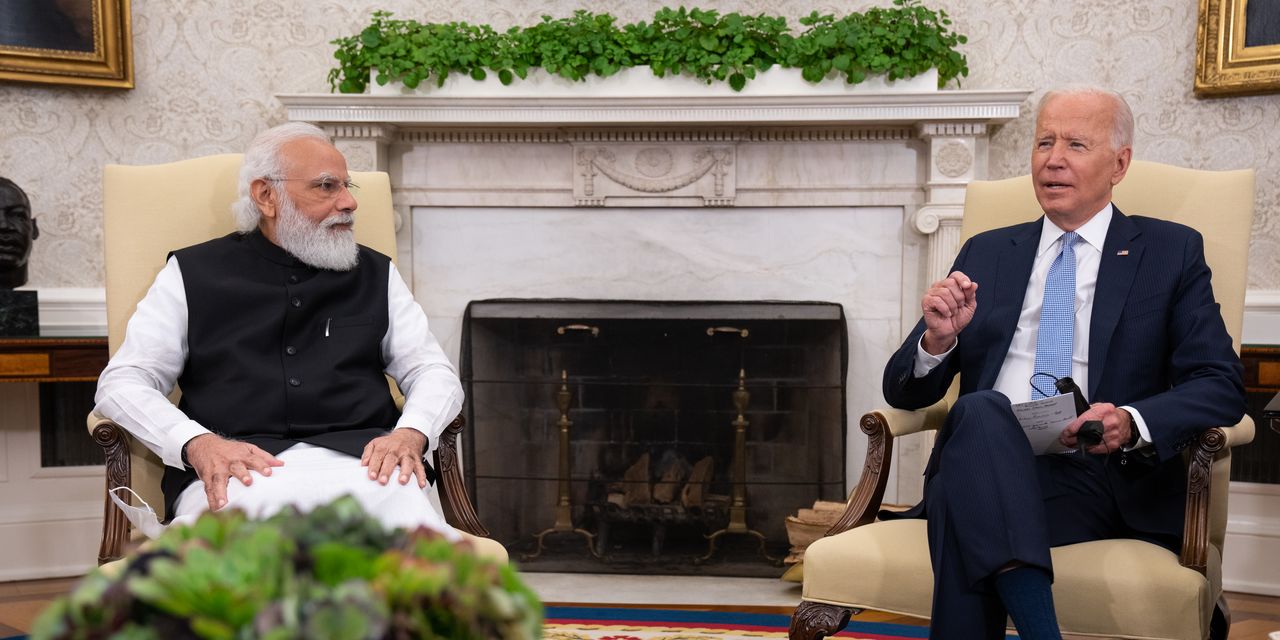A state dinner at the White House, address to a joint session of Congress, and one-on-one with Elon Musk might satisfy most foreign leaders visiting Washington. Indian Prime Minister Narendra Modi brings much bigger ambitions with him this week: hitching India’s wagon to the decoupling/derisking/friend-shoring star that is gradually shifting advanced manufacturing out of China.
The Biden administration is happy to help, rolling out grand-sounding bilateral programs such as the Initiative for Emerging and Critical Technology and Semiconductor Supply Chain and Innovation Partnership. It still won’t be easy.
From a standing start in the 1990s, India has built a globally competitive brain power complex, Bengaluru and Hyderabad taking their place alongside San Jose and Shenzhen as knowledge nexuses. Firms like
Tata Consultancy Services
(ticker: 532540.India) and
Infosys
(500209.India) have pioneered the new economic category of IT outsourcing. The U.S. semiconductor elite employs tens of thousands of Indian researchers for chip design.
What India doesn’t do well is make complicated stuff. The country produces less than 5% of the world’s electronics; China more than a third. Modi is throwing subsidy money and political capital at changing that. “They want the back office of the world to also become the workshop of the world,” says Ravi Shankar Chaturvedi, co-founder of Tufts University’s Digital Planet program.
The top trophy of high-tech manufacturing, a “fab” to produce semiconductors, looks beyond India’s reach for the moment, not least because the companies involved have commitments elsewhere. In the past week, U.S. champion
Intel
(INTC) greenlighted $40 billion worth of new fabs in Israel, Germany, and Poland.
Modi could walk away with a smaller prize from his summit: a $2.7 billion plant from U.S. memory-chip power
Micron Technology
(MU) to test and package semiconductors postproduction. Delhi will reportedly subsidize half the cost. “The Micron investment would be a first baby step,” says Gaurav Gupta, a researcher at tech consultant Gartner. “Singapore, Malaysia, and Vietnam already have testing and packaging ecosystems.”
TCS, Infosys, and rivals are linked to the old new economy, particularly the U.S. banks that dominate their client lists, says Rahul Malhotra, a Singapore-based tech analyst at AB Bernstein. That has kept their stocks subdued while the artificial-intelligence frenzy lifts other tech names. “The IT services guys will benefit from AI maybe two or three years from now, when their bank customers start integrating it,” he predicts.
What India has that Singapore, Malaysia, and Vietnam don’t is scale. The nation of 1.4 billion churns out 2.5 million college graduates in STEM specialties every year. Its economy, No. 5 in the world, is expanding more than 6% annually. The digital economy is growing much faster.
Amazon.com
(AMZN) last month earmarked $13 billion to build out cloud services in India.
Modi’s manufacturing drive has plenty of low-hanging fruit to pick in less-than-cutting-edge tech, Tufts’ Chaturvedi asserts. “You could see a big domestic market in simple chips for cars and washing machines that are feeding India’s own growing affluence,” he says.
As the pomp laid on in Washington attests, there’s good reason to believe that India’s hour has come, or at least might be coming. “What happened in China over the past 10 to 15 years will happen in India over the next 10 to 15,” says Hemant Taneja, CEO of San Francisco–based venture-capital firm General Catalyst, which invested in nine Indian companies last year.
Modi offers no shortcut to decoupling from China, though.
Email: [email protected]
Read the full article here


